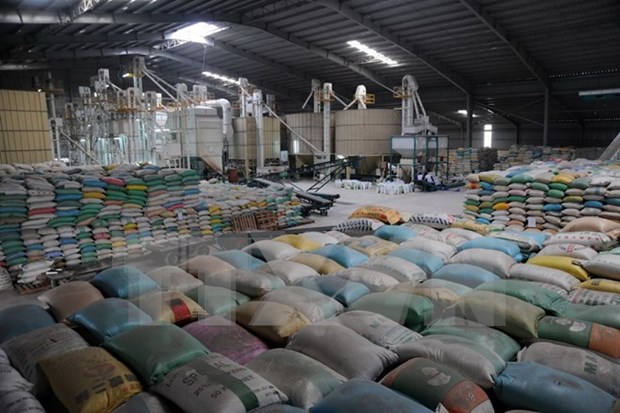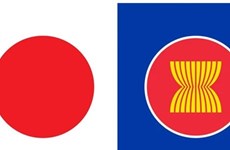Asia’s dropping rice output threatens food security
Nearly a decade after a spike in global food prices sent shockwaves around the world, Asia's top rice producers are suffering from a blistering drought that threatens to cut output.
 Illustrative image (Source: VNA)
Illustrative image (Source: VNA)World rice production is expected to decline for the first time this year since 2010, as failing rains linked to an El Nino weather pattern cut crop yields in Asia's rice bowl. A heat wave is sweeping the top rice exporter India, while the second largest supplier Thailand is facing a second year of drought.
Swathes of farmland in Vietnam, the third-biggest supplier, are also parched as irrigation fed by the Mekong River runs dry.
The three account for more than 60 percent of the global rice trade.
James Fell, an economist at the International Grains Council (IGC) said there has been no a large price reaction to hot and dry weather thanks to surplus stocks in India and Thailand. But that can't last forever.
Rice inventories in the three top exporters are set to fall to 19 million tonnes at the end of 2016, the biggest year-on-year drop since 2003, according to Reuters calculations based on US Department of Agriculture data.
According to Bruce Tolentino of the Philippines-based International Rice Research Institute, in general prices are still stable right now. They're inching up though, and what will drive things over the edge will be a major calamity in one of the major producing countries, he said.
Although India's rice output in 2015 was largely stable, extremely hot temperatures are threatening a second crop in India.
Traders see further price gains by June as India's next big crop is not due until September and Thailand's main crop by year end.
The IGC sees a 2016 world harvest of 473 million tonnes, down from 479 million tonnes in 2015 and the first decline in six years.
Thailand's last main crop was only about half of the peak production a few years ago and the USDA has forecast output will drop by more than a fifth to 15.8 million tonnes this year.
Thai farmers were asked not to plant rice as there is little water in the reservoirs after two years of drought.
In Vietnam, output could fall 1.5 percent this year to 44.5 million tonnes, while exports would be 8.7 million tonnes, steady on a previous projection. As much as 240,000 hectares of paddy have been destroyed by drought and salination in the central area and southern Mekong Delta region.
Against the backdrop, some Asian countries are already looking to raise imports.
Indonesia is expected to see 2016 purchases jump by more than 60 percent to two million tonnes from a few years ago.
China, the world's top importer, taking about 5 million tonnes annually, is expected to continue this buying pace. IGC has forecast China's 2016 production will fall short of
consumption for a third consecutive year.
The Philippines had the lowest stocks since October in March despite importing 750,000 tonnes and its procurement agency has standby authority to ship an additional 500,000 tonnes.
Philippine Economic Planning Secretary Emmanuel Esguerra said although El Nino has entered its weakening stage, the risk of higher food prices remains given the onset of the summer season.
Rice price in early April hit 389.50 USD per tonne, the strongest since July and up 13 percent from an eight-year low of 344 USD last September.-VNA












